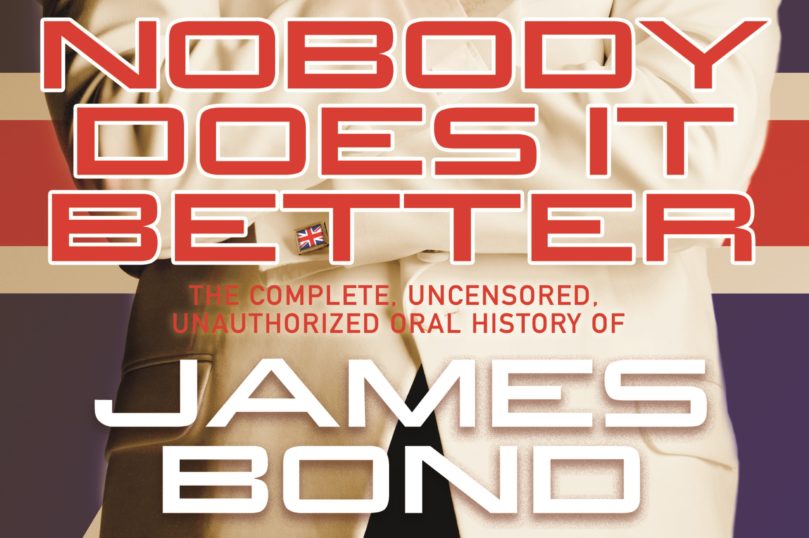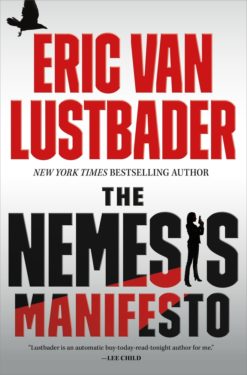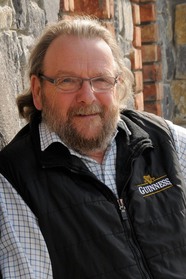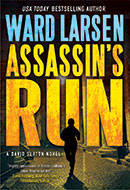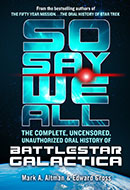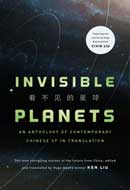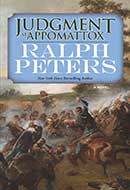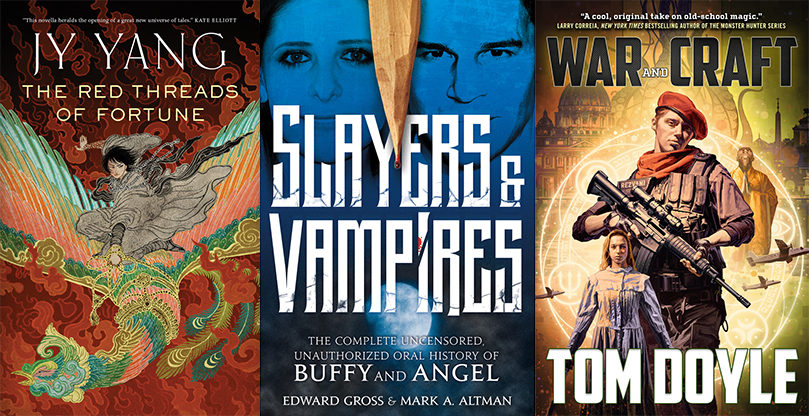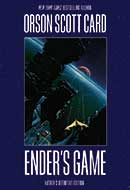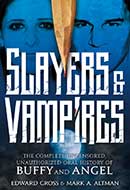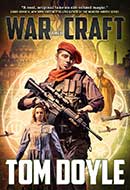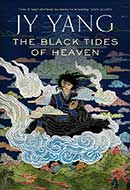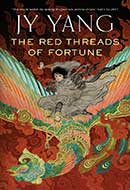opens in a new window opens in a new window
opens in a new window opens in a new window
opens in a new window opens in a new window
opens in a new window opens in a new window
opens in a new window
opens in a new window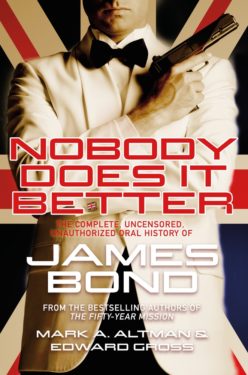 The ultimate oral history of the only gentleman secret agent with a license to kill… and thrill…telling the incredible, uncensored true stories of the James Bond franchise and spy mania.
The ultimate oral history of the only gentleman secret agent with a license to kill… and thrill…telling the incredible, uncensored true stories of the James Bond franchise and spy mania.
For over five decades, the cinematic adventures of James Bond have thrilled moviegoers. Now, bestselling authors Mark A. Altman and Edward Gross take you behind-the-scenes of the most famous and beloved movie franchise of all-time filled with reflections from over 150 cast, crew, critics and filmmakers who reflect on the impact of this legendary movie franchise as well as share their thoughts about their favorite (and least) favorite 007 adventures and spy mania which gripped fans the world over in the wake of the success of the James Bond films.
From Russia–with love, course–to Vegas, from below the bright blue waters of the Bahamas in search of a missing nuclear weapon to the top of the Golden Gate Bridge, from below the seas in Stromberg’s new Noah’s Ark of Atlantis into orbit with Hugo Drax, opens in a new windowNobody Does It Better: The Complete Uncensored, Unauthorized Oral History of James Bond tells the amazing, true story of the birth of James Bond through the latest remarkable James Bond adventures as well as the Spy mania classics that enthralled the world.
It’s Bond and Beyond from the critically acclaimed authors of the bestselling The Fifty-Year Mission and So Say We All.
opens in a new windowNobody Does it Better will be available on February 11, 2020. Please enjoy the following excerpt.
THE SIXTIES: THE DOCTOR IS IN
“No, Mister Bond, I expect you to die.…”
Two decades into the twenty-first century, it’s hard to imagine what it was like to first see Dr. No in a theater unless you were actually there. It was 1962, only two decades after the end of World War Two. The Cold War was heating up; the Soviet Union signed a trade pact with communist Cuba, triggering a U.S. trade embargo; downed U2 pilot Francis Gary Powers was exchanged for convicted Soviet spy Rudolf Abel in Berlin on the Glienicke Bridge; and astronaut John Glenn became the first American to orbit the Earth. In August, East German border guards murdered eighteen-year old Peter Fechter as he attempted to make it over the Berlin Wall, while an assassination attempt was made against French President Charles de Gaulle, escalating global tensions.
Meanwhile, the glamorous Jackie Kennedy took viewers on a tour of the White House in a nationally televised special, AT&T put the first commercial communications satellite into orbit, Wilt “The Stilt” Chamberlain became the first basketball player to score 100 points in a game (and more than likely 100 women as well), Bob Dylan released his first album, and West Side Story won Best Picture at the Oscars. Tragically, it was also the year in which Marilyn Monroe was found dead in bed from an overdose of sleeping pills.
Ironically, it was also the year that Air France Flight 007 crashed on take-off in Paris, while at movie theaters 007 first took off. In October 1962, only weeks before the Cuban Missile Crisis had the world on the brink of a nuclear exchange (and on the same day that The Beatles released their first single, “Love Me Do”), Dr. No debuted in theaters. As presidents such as Ronald Reagan and Bill Clinton both said many years later in explaining the appeal of 007, it was very reassuring to audiences to know a secret agent like James Bond was looking out for Queen and country and making the world safe for democracy.
DR. NO (1962)
The milieu in which the early James Bond films took place was still remarkably exciting and unfamiliar to most fans. Movies about tradecraft (aka spying) had largely been dour affairs and set in the run-up to or during World War II in which American and British spies attempted to foil the Nazi or German spies that had infiltrated America. While legendary director Alfred Hitchcock had visited the world of espionage with relish in such films as Notorious, The Man Who Knew Too Much, The Lady Vanishes and Secret Agent, it’s his classic 1959 masterpiece, North By Northwest, that would in many ways prove the template for over five decades of James Bond adventures, filled with a protagonist who travels in high society (in this case, a New York advertising executive mistaken for nonexistent spy George Kaplan); a picturesque travelogue from Manhattan hotels and the United Nations, to trains to prairies to Mount Rushmore; a coterie of elegant villains top-lined by James Mason; and, of course, a beautiful woman in danger, the resourceful Eva Marie Saint.
JAMES STRATTON
(author, Hitchcock’s North by Northwest: The Man Who Had Too Much)
North by Northwest brought lavish production values, attractive leads, and glamour to what had been grittier, film noir-like narratives. Also, unlike the more cerebral, complex narratives of le Carré, the emphasis was on a series of loosely connected thrill-ride adventures. The suggestion that the government was gathering intelligence in a way that was murky and dispassionate would be expanded on by subsequent entries in the genre.
JAMES CHAPMAN
(author, Hitchcock and the Spy Film)
Obviously Bond would go to some wild places that Hitchcock never would have, but, given North by Northwest, does it feel like a natural progression for Hitchcock from his spy films to, at the very least, Dr. No and From Russia With Love? I think the look and style of the early Bond films were very strongly influenced by North by Northwest. Most spy movies in the 1950s, in Britain and Hollywood, were relatively low-budget, black-and-white affairs. Supporting features at best. Hitchcock’s film demonstrated that the genre could be mounted on a bigger, more spectacular, A-feature scale.
JAMES STRATTON
North by Northwest gave Bond the following: the quickly changing multiple locations, the smart-assed, irreverent verbal reactions, the sophisticated debonair villains, the complicated assaults, the sustained physical abuse of the hero, and the initially distant female character who becomes an ally.
Dr. No from United Artists offered everything North by Northwest did and more. In the colorful, globetrotting and, at times, sadistic film, the sinister Dr. Julius No is working for SPECTRE (the unforgettable acronym for Special Executive for Counter-intelligence, Terrorism, Revenge, and Extortion) to topple American rocket launches. One man stands in his way, James Bond, the only gentleman secret agent with a license to kill … and thrill … as the trailers bombastically heralded Sean Connery’s tuxedo-clad arrival.
Played with sinister aplomb by Joseph Wiseman, who feared being typecast in a series of faux Fu Manchu-like roles, Dr. No brings an understated menace to the proceedings with a dash of elegance and class. His lair is hidden on the island of Crab Key, whose exteriors were filmed on the beaches of Ian Fleming’s beloved Jamaica, and stunning Ken Adam-designed interiors—unlike audiences had ever seen before—back at Pinewood Studios. “Minnows pretending to be whales,” muses 007. It depends on which side of the glass you’re on.
Although early development revolved around adapting Thunderball, plans were abandoned when it became clear to Broccoli and Saltzman that the legal rights were potentially encumbered due to the litigation between Kevin McClory and Ian Fleming. Instead, they chose to develop Dr. No, giving birth to the world’s greatest movie franchise along the way.
RICHARD MAIBAUM
(cowriter, Dr. No)
Deciding to go with Dr. No first was one of the best things that ever happened. At that time I went to England and was put to work. I was told to collaborate with Wolf Mankowitz. We read the book again and fell on the floor and said, “What is this? This guy? A Chinaman with two hooks? Fu Manchu and all that kind of stuff, that’s gone out with long winter underwear.” We decided that Dr. No would be a monkey that sat on the shoulder of the villain, who was going to be the professor. That’s the way we wrote it.
RAY MORTON
(senior writer, Script magazine)
Mankowitz’s contributions to Dr. No appear to have been minimal. He worked with Maibaum on an early treatment and apparently had a hard time taking the assignment seriously, since he was allegedly the person responsible for transforming the character of Doctor No into a monkey carried around by Buckman, a more mundane bad guy he created, because he felt Fleming’s Fu Manchu-style villain was ridiculous. Mankowitz’s presumption ticked off Cubby Broccoli, so Mankowitz withdrew from the project, leaving Maibaum to carry on alone.
WOLF MANKOWTIZ
(uncredited cowriter, Dr. No)
There were many disagreements with the producers, one of them on the tone of the script. I always intended it to be a spoof. In fact, I wanted “Doctor No” to be an ape.
RICHARD MAIBAUM
When we handed in the treatment, both Cubby and Harry Saltzman screamed and hollered and yelled and said, “No, this monkey is terrible. We want the Chinaman with the hooks.” Wolf Mankowitz didn’t like what happened and quit. I was there alone, and the monkey was out. Though whenever Cubby and I had an argument about something, he would yell at me, “Dr. No was a monkey!”
While the script was being written, the search began for a director. Although Terence Young would eventually get the gig, first up was Guy Hamilton, whose most recent films at the time had been An Inspector Calls (1954), Charley Moon (1956), Manuela (1957) and The Devil’s Disciple (1959). But family issues prevented him from being able to commit to the shooting schedule in Jamaica and he bowed out. The job fell to Young, who was born on June 20, 1915 in Shanghai, China. His pre-Bond directorial credits include Corridor of Mirrors (1948), Safari (1956), Action of the Tiger (1957), and Black Tights (1961). After directing Dr. No, From Russia with Love (1963), and Thunderball (1965), he moved on to such projects as Wait until Dark (1967), Red Sun (1971), The Valachi Papers (1972), Bloodline (1979), Inchon (1981), The Jigsaw Man (1984), and Run for Your Life (1988).
Early on in his career, Young received training as a writer and sold several screenplays. In World War II he was a part of the Guards Armored Division and was wounded twice in battle. His feeling, though, was the experience provided a more-rounded understanding of men in action. Later, in 1948, he encountered playwright Sherwood Anderson, from whom he learned the fast-moving style that would later be utilized by him in the Bond films.
TERENCE YOUNG
(director, Dr. No)
I learned not to use up time and attention introducing characters and getting them started. He also taught me the importance of strong “go-outers,” which is the line you write to take someone off the scene in an unforgettable way.
DAVID V. PICKER
(president and chief executive officer, United Artists)
As I’m sure is the same with everyone else in the world, I found Terence to be a charming, witty, extremely literate, and pleasant gentleman. I appreciated his time and his willingness to talk openly about his friendship with Ian Fleming and his observations of the world of James Bond. Certainly no one knows more about the creation of the cinema’s 007 than the man who defined a genre, creating Dr. No, From Russia With Love, and Thunderball, three of the first and probably best films in the series.
PETER HUNT
(editor, Dr. No)
Terence was extremely instrumental in the whole style of the films. He was extremely encouraging to me in our early style of Dr. No and From Russia With Love, and one cannot underestimate the personality of Terence that was interjected into the character of James Bond and Sean Connery’s playing of it in the early films. There’s no doubt about it, and he was the right man for the job at the time; a very good filmmaker.
RICHARD MAIBAUM
I think Terence is not a meticulous director, but he’s an inspired one at times. Although there are things in his pictures that are even sloppy, still, I think he’s almost the best that we’ve had in doing the romantic scenes. I don’t think he’s been given all the credit that he deserves, especially not these days, where it’s a long time ago.
DAVID V. PICKER
Had he been some years younger, Terence could have played James Bond. Years after I left UA, I produced a film directed by Terence. Terence dressed from Savile Row. Terence ate at Les Ambassadeurs, the poshest place in London. If he had money, he spent it. If he didn’t have any, he spent it. If he saw a beautiful woman, he went after her, but with class and style. And that’s what Sean needed to become James Bond. He needed Terence Young, and that’s who he got.
Young came to the project already knowing both Cubby Broccoli and Ian Fleming, which helped in no small way in terms of his comfort level.
TERENCE YOUNG
I knew Ian, but I didn’t particularly like him. We became, eventually, enormously good friends, but I thought he was a pompous son of a bitch, immensely arrogant, and when we saw him after I’d been signed to do the picture at some big press show put on by United Artists, he said, “So they’ve decided on you to fuck up my work.” I said, “Well, let me put it this way, Ian. I don’t think anything you’ve written is immortal as yet, whereas the last picture I made won the Grand Prix at Venice. Now let’s start level.” He said, “My, you’re a prickly guy, aren’t you?” and I said, “Yes, I am, now let’s go and have dinner.” We left the party and went off and had dinner. Ian was a charmer once you got to know him. He was one of the most delightful people I ever met.
One of Young’s first challenges, according to the director, was the screenplay itself, which wasn’t close to being ready to shoot.
TERENCE YOUNG
We had, at one time, I believe, five different scripts on Dr. No, including one in which Dr. No was a monkey. It was the craziest thing, and finally Cubby Broccoli nearly killed Harry. I mean physically. He got in a rage, and Cubby’s a very quiet, tranquil man, but by God he was inflamed, and he said, “Look, we’ve paid all this fucking money for this James Bond book and we’re not using a word of it. Now, Terence is a writer; he’s the quickest writer I know. He’s got ten days to put it back; he can take all the scripts we have and collect them, and whatever he writes we’re going to be stuck with, and Harry, if it’s bad, it’s your fault.” He blamed Harry, because Harry was in charge of the script. Cubby was doing other things. That’s how this girl, Johanna Harwood, who was my continuity girl on a previous picture, got in it with me. We took a room at the Dorchester Hotel, and we worked day and night. I used to give her things to write, like I’d say, “James Bond comes out of this, gets in the car, and drives off. Just put it in, wearing this…”, and I’d go on writing another scene with dialogue. She did that and she did it very well.
RAY MORTON
Johanna Harwood was the first screenwriter of the Eon Bond movies. She penned the original treatment for Dr. No—by her own account, a very straightforward adaptation of the novel—which was used to get things rolling, but was apparently discarded by Maibaum and Mankowitz when they came on board. She was also the final screenwriter on the movie, doing a final edit and polish on the script in conjunction with director Terence Young just prior to the commencement of principal photography. So she was responsible for the final shape of the narrative and also contributed the great visual gag showing the recently stolen Portrait of the Duke of Wellington by Goya in Doctor No’s lair, suggesting that No was responsible for its theft.
With the script being finalized and Young signed as director, the most important challenge was finding an actor who could bring James Bond to life. While the initial instinct may have been to cast a “name,” Broccoli and Saltzman strongly believed that 007 needed to be played by an unknown for two significant reasons: they wouldn’t be bringing the baggage of other roles to this film, and, more importantly, an established star likely wouldn’t sign for multiple films and would be too expensive. The answer ultimately came in the form of Sean Connery.
TERENCE YOUNG
I first meet Sean in 1957 when I was making Action of the Tiger, which starred Van Johnson and Martine Carol. He was a rough diamond, but already he had a sort of animal force. Like a younger Burt Lancaster or Kirk Douglas. The interesting thing is that Martine Carol, who was a very famous French actress at the time, said, “This boy should be playing the lead instead of Van Johnson. This man has big star quality.”
ROBERT SELLERS
(author, The Battle For Bond)
My feelings are that Connery wanted the role, but the hesitancy came from having to sign another long-term contract. And as we know, by his third or fourth Bond film this became a bone of contention between the actor and the producers.
DAVID V. PICKER
Names started to filter back to us from London. Patrick McGoohan was mentioned. Then a bright young actor named Robert Shaw. Finally, Harry Saltzman called me from London to say he was coming to New York with some film and stills on their choice. His name was Sean Connery. He was a Scotsman. The clips Harry brought were from two films Connery had made for American companies, Darby O’Gill and the Little People for Disney, and Another Time, Another Place for Paramount, both in small roles. I saw the clips. He was attractive. He had what I thought was an Irish accent in Darby O’Gill, and in the film with Lana Turner, he sounded more English. I was neither over-or underwhelmed. I asked Harry if he was the best he could find, and his answer was, “He’s the richest man in the poor house.” “If he’s the best you can find, then let’s go with him.” It was as simple as that. The deal for Connery’s services was made by Harry and Cubby with Richard Hatton, an agent I’d found in previous dealings to be most approachable and fair.
ROBERT SELLERS
Connery’s mistrust of long-term contracts was as a result of his misuse at the hands of 20th Century Fox when they signed him up in the ’50s. There he was made to feel like a piece of meat, loaned out to other studios for his bosses to make money. It was a situation that influenced how Connery would always feel about studios and producers and the reason why he carved out a career for himself suing them. Connery also had the recent example of his British contemporary Albert Finney, who had rejected the role of Lawrence of Arabia because he didn’t want to sign a five-picture deal with its producer, Sam Spiegel. This might also have crossed Connery’s mind as he debated whether to sign on the dotted line to play Bond. Is this part worth all the shit I’m going to get?
STANLEY SOPEL
(associate producer, Dr. No)
I think they always knew from Day One that Sean Connery was going to play James Bond. He was recommended by a lady journalist who worked for the Daily Express. We saw him—he didn’t look like anybody’s idea of Bond when we first saw him—but there was something there, and Harry and Cubby were pretty certain this was the man they wanted. We did go through the motions of screen-testing some fifteen or twenty hopefuls of everybody’s idea of what Commander Bond should look like: 6′2″, British uppercrust, with the sort of chiseled face. Had a genius come out of that testing, Sean probably wouldn’t have gotten the part, but he was it from the beginning.
JOHN CORK
(author, James Bond: The Legacy)
The first thing to understand about the cinematic James Bond is that Sean Connery was perfect for the role. He wasn’t simply good. He was John Wayne in Stagecoach. He was Humphrey Bogart in The Petrified Forest. He was Marilyn Monroe in Gentlemen Prefer Blondes. Everything Connery brought to the role was right.
ROBERT SELLERS
When Sean was cast, people said that was terrible casting. Why are you casting a Scottish truck driver as an Eton-educated English spy? They thought the choice was terrible. But, of course, it was the perfect choice, because to some extent, the Sean Connery film Bond is not the Fleming Bond. He’s not the Bond of the novels. He’s a different animal altogether.
TERENCE YOUNG
Sean has always hated the press, because they were very snide when he first got the job. They kept saying, “Mr. Connery, would you call yourself an Old Etonian? How did your training driving a milk truck prepare you for this picture?” They were very, very cruel when he started, and Sean from that day on never wanted to have anything to do with the press. I remember when we were doing Thunderball, people were saying, “Now that he’s important, he won’t do any press interviews”—I used to have to twist his wrist to get him to go see the press—and people would say, “Why is he being so unpleasant?” I said, “He’s not unpleasant, you were. You started it. After all, Sean’s never changed. He’s been like this all the time and you’re the people that provoked him. You tried to make a monkey out of him and now he doesn’t need you.”
BOB SIMMONS
(stunt arranger, Dr. No)
I used to work with Sean very carefully. He used to say, “What do I do, and what do you do for me?” As the film was progressing, I’d say to Sean, “I want you to come and look at this sequence; I’ll show you something.” He’d say, “Okay, let’s work on it.” Sean would be on the set until ten o’clock at night; we’d stay there on the set with just the house lights on, when everybody else had gone. Just the night watchman was there. Sean was so keen; so good.
TERENCE YOUNG
Sean caught on very quickly. I actually took him to Jamaica a week or two before the picture started and we played a little golf. I taught Sean to play golf, actually, and now he can kick the hell out of me, because he’s very good. He’d never played before and he didn’t like the game; he just went round with me a couple of times. Then when he was doing Goldfinger, he had to learn to play properly and he became an absolute golf nut. He’s probably the craziest golf enthusiast I’ve ever met. So Sean came and spent a few days in Jamaica. He’s a very shrewd person—he’s not clever, he’s intelligent. In one week he got the whole thing summed up, how he was going to play Bond, how he was going to look and all that. He’s a very quick study, believe me.
STEVEN E. DE SOUZA
(screenwriter, Die Hard)
I knew Connery from Tarzan’s Greatest Adventure, where he was, essentially, Red Grant to Gordon Scott’s almost Bondian Tarzan. Because I had read the novel after I already knew the movie was in the pipeline, I visualized Connery from the very first chapter. In my humble opinion, after him, Timothy Dalton came the closest in appearance to the character described in the books and is tied with Daniel Craig and Connery’s first three outings in bringing Bond to plausible life as a living, breathing character.
ROBERT SELLERS
I think Connery was hired for the same reason Fleming and McClory wanted someone like Richard Burton to play Bond in their movie: They could see that if Bond on-screen was played by, let’s say, a David Niven-type English actor, it just wouldn’t have worked. By the time the Bond films came to be made, there had been a revolution in screen acting, instigated in America with the method and actors like Marlon Brando and James Dean. That style of acting, blue collar acting if you like, didn’t permeate into England for quite a few years.
British film and theater remained the preserve of the middle classes, with about as much dynamism as a slab of pork luncheon meat. There was no virility in British acting at all. Then along came the “kitchen sink” actors who all hailed from the working class, Michael Caine, Albert Finney, Richard Harris, etc., and of course Sean Connery. These actors were macho, virile, uncompromising, their heroes were Bob Mitchum, not Laurence Olivier. In other words, had Bond been played by a middle-class actor, a Dirk Bogarde type, it would have been a gigantic turn off, especially with American audiences. I think Richard Maibaum said it best when he was asked why Connery worked so well; it was the fact that the producers cast an actor who looked like he was a truck driver, but gave him all the attributes of an English establishment figure, and it was this clash of cultures that made Connery’s Bond so fascinating. He was a brute in a Savile Row suit. Daniel Craig has exactly the same appeal.
RONALD D. MOORE
(cowriter, Mission Impossible II)
Sean Connery and Dr. No is where it all begins with me. I return to that movie over and over again in my love of the Bond franchise. I kind of came to it a little late; I wasn’t the dyed-in-the-wool Bond fan from an early age. I didn’t discover it until high school in the late ’70s or early ’80s. We had a Betamax and I was madly recording things on network television, and one of them was Dr. No. I recorded it from network television and watched it over and over again.
FRED DEKKER
(cowriter, The Predator)
Connery was supremely confident. I realize this is what makes a great movie star. If you look back at Steve McQueen or Clint Eastwood or any of those guys, they exude confidence and there’s something magical about that for a schmoe like me going into the movies and wanting to be that.
STEVEN E. DE SOUZA
That moment when he introduced himself in the casino as “Bond, James Bond”—it struck me as simple and classic and, as I was a precocious film buff even at thirteen, an echo of the introduction to Rick Blaine in Casablanca.
LISA FUNNELL
(author, For His Eyes Only: The Women of James Bond)
To me, this is one the greatest cinematic introductions. Our first encounter with Bond is through his hands as his face is obscured. We observe his keen sense of touch as he defeats his opponent with ease at the card table. Only when Sylvia Trench asks for his name do we get a shot of Connery, who looks dapper in his tuxedo while smoking a cigarette, and delivers the classic line, “Bond, James Bond.” This moment is iconic and many people on screen and in person have mimicked this mode of personal introduction!
SEAN CONNERY
(actor, “James Bond”)
In the beginning, there was one kind of Bond very well known to many people who read the books and had a very definite opinion. For instance, the lock of hair that would fall forward, the blue eyes, cruel to some, sadistic to others, and an athlete. Just many dimensions. That sort of success was there before I even touched it, or even read any of the books. Then when I became involved with the film, I felt that there was a lack of humor about it. Within a year I became quite friendly with Ian Fleming, and what I admired more than anything else about him was his curiosity about everything. When I mentioned the business of humor, he was quite surprised, because he felt he was quite humorous. He was, as a man, humorous, but in writing the character, he wasn’t.
JOHN CORK
Connery was the closest to Fleming’s Bond by a wide margin. It is the Connery of Dr. No and From Russia With Love who is Fleming’s Bond; the Connery who stays out too late at a casino, who has flashes of real anger, who has genuine distaste for the senseless deaths that are too often part of the job. Because the last three Bond novels were written after Connery was cast as 007, Fleming made minor concessions to Connery’s Bond. He gave 007 a Scottish background for example. But just as importantly, Terence Young was devoted to transforming Fleming’s Bond into a cinematic character. That involved some changes, but Young and Connery capture the elegance, humor, irony, and brutality of Fleming’s writing with Connery’s performance.
LISA FUNNELL
Connery was an interesting choice for the part. Ian Fleming wanted to cast David Niven in the title role, but Albert R. Broccoli wanted Bond to convey a more mid-Atlantic image with less jarring English mannerisms in order to appeal to the American market. Connery was certainly able to achieve this. However, my primary issue with Connery’s Bond is the way in which he interacts, often violently, with women. He manhandles them (like when he tells Honey Ryder leave the island and pulls her toward her boat) and his sexual encounters are often coercive and devoid of consent (as in the case of Miss Taro, who clearly doesn’t want to sleep with Bond but is coerced). If the character of Bond stems from the British lover literary tradition, then why does he need to use force to get women to comply with his wishes? For me, this detracts from his heroism. In fact, my students describe Connery’s Bond as being “rapey” and I find this to be extremely problematic.
TERENCE YOUNG
People have said I put a lot of myself into Bond. I sent Sean to my shirtmaker, I took him to my tailor, I used to make him go out in these clothes, because Sean’s idea of a good evening out would be to go out in a lumber jacket. One thing, in fact—and I don’t know whether one should talk about this—Sean is not a very polite eater. In Dr. No, in that scene in the dining room, Sean sits down and they have dinner. I kept saying, “Sean, you’ve got to eat with your mouth closed,” and he kept saying, “Well, I can’t breathe if I do that!” So I changed the thing and we brought in the champagne and Sean had a little bit of one-upmanship by saying, “Ah, the 1951; I prefer the 1952,” or something like that. Of course, by the time we did Thunderball, Sean was James Bond as no one else will ever be.
Copyright © 2020 by Mark A. Altman and Edward Gross
Pre-Order Your Copy
opens in a new window opens in a new window
opens in a new window opens in a new window
opens in a new window opens in a new window
opens in a new window opens in a new window
opens in a new window
 Bond. James Bond. A name that excites film lovers and thriller fanatics alike. Get a true behind-the-scenes look at the world’s most famous film franchise in opens in a new windowNobody Does It Better: The Complete Uncensored, Unauthorized Oral History of James Bond by Mark A. Altman and Edward Gross. As they did in their oral histories of Battlestar Galactica and Star Trek, Altman & Gross offer reflections from over 150 cast, crew, critics and filmmakers telling behind-the-scenes stories of every Bond film. But what’s a good 007 adventure without a great villain? Take a look back at some of our favorites throughout this illustrious film series.
Bond. James Bond. A name that excites film lovers and thriller fanatics alike. Get a true behind-the-scenes look at the world’s most famous film franchise in opens in a new windowNobody Does It Better: The Complete Uncensored, Unauthorized Oral History of James Bond by Mark A. Altman and Edward Gross. As they did in their oral histories of Battlestar Galactica and Star Trek, Altman & Gross offer reflections from over 150 cast, crew, critics and filmmakers telling behind-the-scenes stories of every Bond film. But what’s a good 007 adventure without a great villain? Take a look back at some of our favorites throughout this illustrious film series. opens in a new window
opens in a new window opens in a new window
opens in a new window opens in a new window
opens in a new window opens in a new window
opens in a new window

